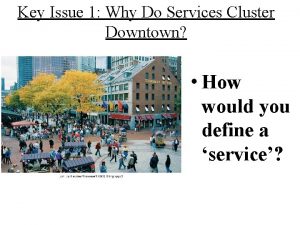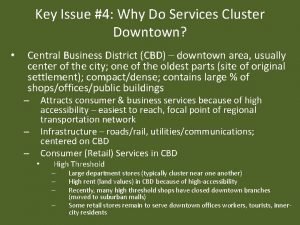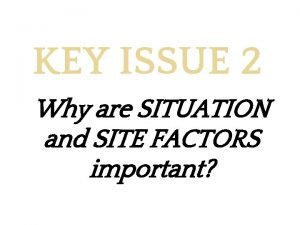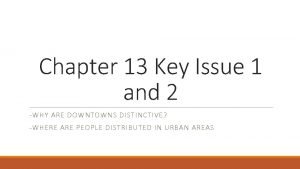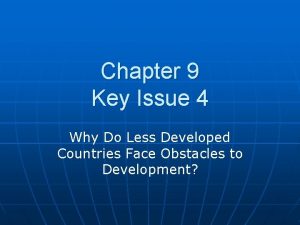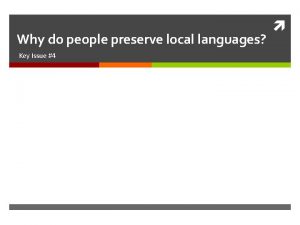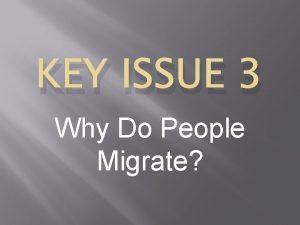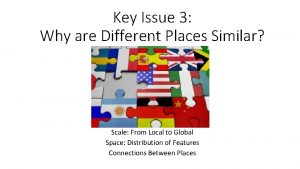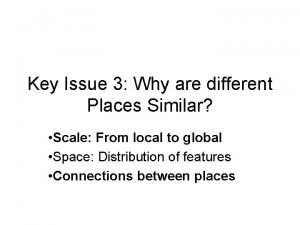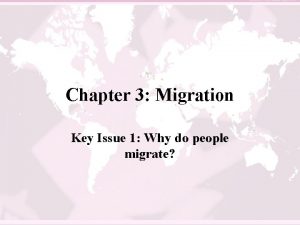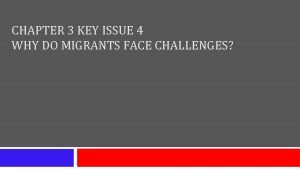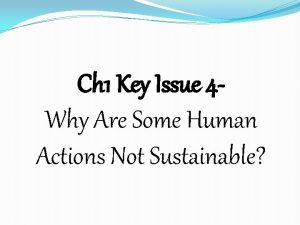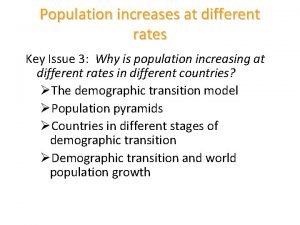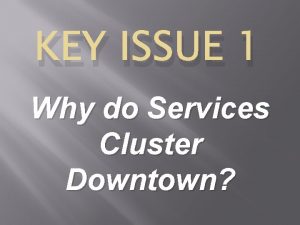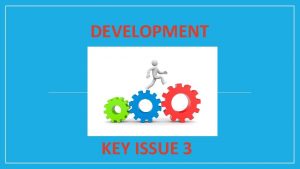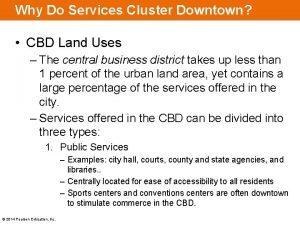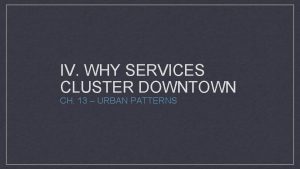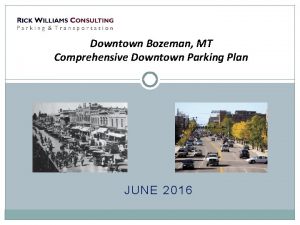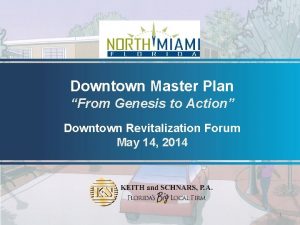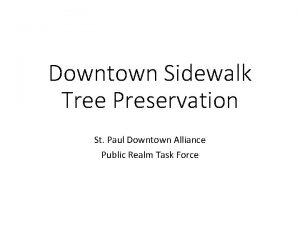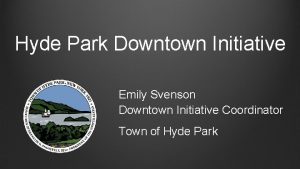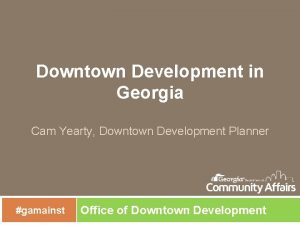Key Issue 1 Why Do Services Cluster Downtown


















- Slides: 18

Key Issue 1: Why Do Services Cluster Downtown? • How would you define a ‘service’?

Services: Any activity that fulfills a human want or need and returns money to those who provide it • Services are located in settlements (Permanent collection of buildings where people reside, work, and obtain services) – Location of services is important for profitability – Affluent regions tend to offer more services (and different types)- Can you think of examples?

Services & your family… • List the services that your parents or family provide for you on a given day: Now how much would these same services cost you if you had to pay for them?

Potential services in my day: 1. 2. 3. 4. 5. 6. 7. 8. 9. 10. 11. 12. 13. Gas for car Education from my professor Use of the highway to get to work Reading of a textbook someone printed Coffee at Starbucks How many of these Phone alarm to wake up services would be Cable TV available to you if you Cell phone lived in an LDC? Taking daughter to the doctor Take-out food Going to the bathroom Putting out garbage Taking a shower

Where Did Services Originate? • 3 types of services: 1. Consumer services: provided to individuals (44% of all U. S. jobs) 2. Business services (facilitate other businesses): 3 types - financial, professional, and transportation & information services (24% of all U. S. jobs) 3. Public services: provide security and protection for citizens and businesses (17% of U. S. jobs) – In the United States, all employment growth has occurred in the services sector

Employment Change in the United States by Sector: All growth since 1970 has been in the tertiary sector. Employment in primary & secondary has not changed

1. For what kind of services would you be willing to travel farther? 2. What kind of services would you not travel very far for? 3. Why?

How far would you travel for…

How far would you travel for…

Range & Threshold: • Threshold: Minimum market (# of people) needed to bring a firm or city selling goods and services into existence and to keep it in business • Factors affecting a fall in the threshold population are – A decrease in population – Change in tastes – Introduction of substitutes • Range: The average maximum distance people are willing to travel to purchase goods and services

Key Issue 1: Why Do Services Cluster Downtown? • CBD land uses: – Retail services in the CBD: • Retailers with a high threshold • Retailers with a high range • Retailers serving downtown workers – Business services in the CBD

Wroclaw, Poland:

• Competition for land in the CBD: – High land costs: • Some of the most expensive real estate in the world (e. g. -Tokyo) - little available • Intensive land use – Underground networks below cities (multistory parking garages, loading docks, utility lines for phones, water, etc, and subways. • Skyscrapers – “Vertical geography”, more economically feasible. Each city has unique downtown skyline. First built in Chicago in 1880’s

“Vertical Geography” • The nature of an activity influences which floor it occupies in a skyscraper: 1. Retailers (street level) 2. Professional offices (middle levels) 3. Apartments (lower noise, panoramic views)



• Activities excluded from the CBD: – Lack of industry in the CBD • Modern factories require large, one-story parcels of land - suitable land typically in suburbs – Lack of residents in the CBD • Push and pull factors involved - pulled to suburbs by larger homes with private yards/schools, pushed from CBD’s by high rents and negatives of city life (crime, poverty, congestion) • CBDs outside North America – Less dominated by commercial considerations - churches royal palaces, and parks – More people live downtown

European City Patterns: • Complex street patterns - prior to automobile, weird angles • Plazas and Squares - from Greek, Roman, Medieval • Low skylines - many built before elevators, others required cathedral or monument to be highest structure • Lively downtowns - center of social life, not just office work • Neighborhood stability - Europeans moved less frequently than we do. • Scars of War - many wars , many cities originally defensive • Symbolism - gothic cathedrals, palaces, and castles • Municipal Socialism - many residents live in buildings that are owned by city government. Some of these are massive housing projects, others small scale apartment buildings.
 Why do services cluster downtown
Why do services cluster downtown Why do services cluster downtown?
Why do services cluster downtown? Hey bye bye
Hey bye bye Key issue 1 where are services distributed
Key issue 1 where are services distributed Chapter 12 key issue 2
Chapter 12 key issue 2 Why are situation and site factors important
Why are situation and site factors important Key issue 1 why are downtowns distinctive
Key issue 1 why are downtowns distinctive Key issue 4 why do countries face obstacles to development
Key issue 4 why do countries face obstacles to development Key issue 3: why do individual languages vary among places?
Key issue 3: why do individual languages vary among places? Key issue 4: why do people preserve local languages?
Key issue 4: why do people preserve local languages? Dubai 1985
Dubai 1985 Why are different places similar?
Why are different places similar? Key issue 3 why are different places similar
Key issue 3 why are different places similar Key issue 3: why do people migrate?
Key issue 3: why do people migrate? Chapter 3 key issue 4
Chapter 3 key issue 4 Key issue 4: why do migrants face obstacles?
Key issue 4: why do migrants face obstacles? Key issue 3 why do some places face health challenges
Key issue 3 why do some places face health challenges Key issue 4 why are some actions not sustainable
Key issue 4 why are some actions not sustainable Key issue 3 why does population growth vary among regions
Key issue 3 why does population growth vary among regions
